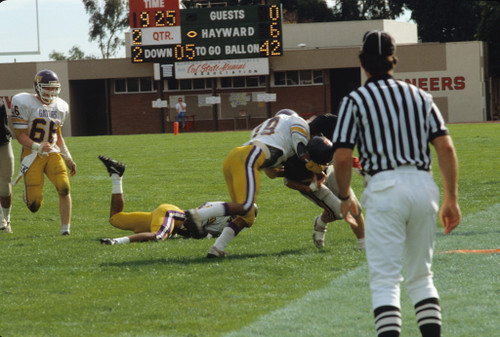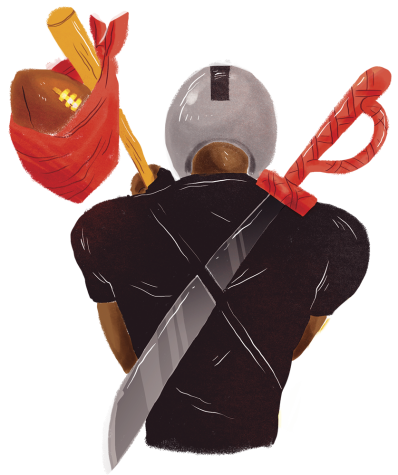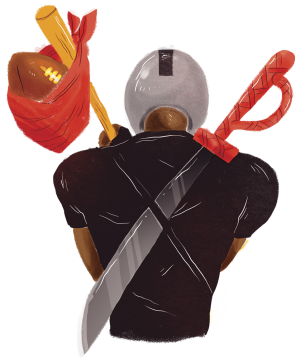We don’t need football at Cal State East Bay

January 4, 2018
The end of college football season is fast approaching. Many students are getting ready to either cheer on their team in the playoffs or watch the last game of the bowl season.
Here at CSU East Bay, neither is happening because we haven’t had a football team since 1993. The program was dropped because of budget restrictions caused by decreasing attendance and Title IX, which mandates gender equality in collegiate athletics.
However, CSU East Bay has shown that a football team isn’t a college necessity. Not only would reinstating a football team be costly, but it is also a dangerous sport.
Regardless, every year we have football enthusiasts who would like nothing more than to have a football team. Casey Romero, a student at Cal State East Bay, is a big football fan and told The Pioneer that “having a football team would be great.” He believes “it gives the school a sense of school spirit.”
Reinstating the Pioneer football team is costly because for East Bay to be compliant with Title IX requirements they must provide the following: “…participation opportunities for women and men that are substantially proportionate to their respective rates of enrollment of full-time undergraduate students,” the National Collegiate Athletic Association (NCAA) states.
In other words, if half the student body is female, half the athletes should be as well. So, if a college has too many male athletes, it has two options. It can either add more women’s teams, which is expensive, or cut back on the number of men athletes.
With East Bay student body being 60 percent female, proportionality stipulation of Title IX demands that we have 60 percent female athletes. If we were to add football, a sport that on average has a roster of 100 players, we would have to invest a lot of money into creating more women teams, or eliminate some of the male sports to offset the cost.
Some may have the idea that college football generates billions of dollars. However, only schools in the Power Five Conferences, which are the wealthiest conferences in the NCAA, produce that much revenue. Power Five Conferences are made up of Division One schools, and even though the revenue is high their expenses are just as high.
The Washington Post reports that in “10 years, 48 athletic departments in college sports’ wealthiest conferences saw earnings surge by nearly $2 billion and spent it almost as quickly as it came in. Many programs still need student fees and school money to pay their bills.”
Football is as dangerous as it is expensive. It poses long-term health problems to the athletes. Some of the common injuries include strains, sprains, fractures, dislocations and concussions. Concussions generate the most concern, as they increase the risk of mental illnesses like dementia and chronic traumatic encephalopathy (CTE). Cognitive impairment, impulsive behavior, depression or apathy, short-term memory loss, difficulty planning and carrying out tasks, emotional instability, substance abuse and suicidal thoughts are symptoms of CTE, as outlined by the Mayo Clinic.
CNN featured Dr. Ann McKee, professor of neurology at Boston University, who studied the case of college football player Michael Keck. McKee stated that Keck had one of the worst cases of CTE for someone under 30, Keck was 25 when he passed away from CTE complications.
Even though football is America’s favorite sport, it poses a threat to the East Bay pockets and to the players’ health. Throughout the campus, you will find students who are die hard fans and would love to have football team, but most of the student body simply don’t care if we have a football team.
Tania Martinez, a senior at CSU East Bay told The Pioneer, “It hasn’t affected me at all, I am fine with not having a football team.” Other people simply stated that they didn’t care about having a football team, as was the case for CSU East Bay student Simone Davenport, “I don’t really care, because that’s not what I came to school for.”

















